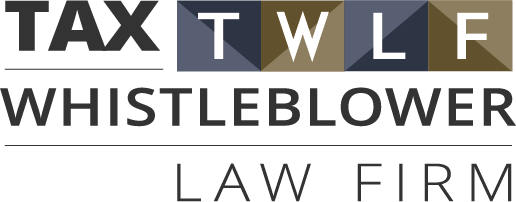Panama Papers
/Panama Papers: Part 2. Law Review Article examines how US Trust Law enables people who had previously sought Panama Papers-like protection from offshore trusts.
As previously covered in this blog here and here, the Panama Papers is a collection of documents and emails from the Panamanian Law Firm, Mossak Fonseca, which specialized in creating offshore trusts and companies to help their clients in hiding money from government detection.
Here’s a recap of the carnage of public officials caught in the wake of the Panama Papers (approximately 140 politicians, 29 billionaires and at least 33 blacklisted people to 214,000 offshore entities, according to Forbes):
- Iceland’s Prime Minister resigned;
- Spain’s Industry Minister resigned;
- a senior Armenian official resigned;
- Ukraine’s President under pressure to resign;
- Pakistan prime minister under pressure to resign;
Also interesting are these two articles about how the Panama Papers were leaked:
- This Wired article discusses size of the data obtained from Mossak Fonseca (2.6 Terabytes)
- This Forbes article discuss the leak and the data sharing between the journalists, often using open sourced encryption methods to secure the data while the journalists were preparing their articles.
Since the Panama Papers leaked, Reid K. Weisbord, law professor at Rutgers, has published an article in the Columbia Law Review entitled, “A Catharsis for U.S. Trust Law: American Reflections on the Panama Papers.” Professor Weisbord’s article summarizes the Panama Papers scandal and the public reaction to the uncovered offshore trust abuses. He then outlines three trust practices that are permitted in the U.S. that offer similar protections that only offshore trusts were previously able to offer. He concludes his paper with possible reforms to prevent on shore trust abuses.
In his paper, Professor Weisbord discusses the following trust tools which provide nearly the same protections once found in offshore trusts:
- Self-Settled Asset Protection Trusts;
- Tax Breaks through Dynasty Trusts; and
- Minimal Reporting requirements.
- Self-Settled Asset Protection Trusts
As explained by Professor Weisbord, traditional trust law allows the trust to be a separate entity from the donor (settlor or creator of the trust) and/or donee (or beneficiary of the trust), so that when a gift is made to a trust, with a spendthrift provision, the trust is not obligated to pay to a donee’s creditors. The creditors can only reach the assets if the trust pays out to the donee, because the spendthrift provision can limit or restrict payments to the donee if there are creditors present.
Also as explained by Professor Weisbord, a self-settled asset protection trust would allow the settlor to transfer his assets to the trust, and if there is a spendthrift provision, the settlor’s creditors could not reach the settlor’s assets. This novel creation by state legislatures has minimized the need to use offshore trusts.
See this pdf outlining the 17 states with some version of the self-settled asset protection trusts laws.
Tax Breaks through Dynasty Trusts
As most estate planners can tell you, one key outcome of an estate plan is to defer taxes. While the tax code allows for certain kinds of deferral with respect to estate plans (and as explained by Professor Weisbord) the code changed over time to include a generation skipping tax so that transfers to a donor’s grandchildren and future generations were taxable. The so called generation skipping tax (“GST”) imposes a transfer tax for gifts to future generations. However, the GST tax also includes an exemption (approximately $5,000,000).
One other barrier to gifting to future generations through a trust is the rule against perpetuities (or simply put, the law that prohibits a trust from existing beyond a certain period, usually 21 years, following the death of the last named living beneficiary at the time the trust was drafted). As Professor Weisbord has pointed out, several states have abolished or limited the rule against perpetuities to permit trusts to exist well beyond the death of the last named beneficiary’s lifetime.
These so called dynasty trusts have enabled creative estate planners to obtain advantages in creating estate plans that were previously limited to using offshore trust. For a summary of dynasty trusts and the rule against perpetuities, see this law firm’s website. For a chart of states that have abolished/limited the rule against perpetuities, see this chart.
Minimal Reporting requirements
As stated by Professor Weisbord, states have reduced the reporting requirements of trusts, so that the trust reporting requirements are minimal or non-existent. This change coupled with the Organization for Economic Cooperation and Development (“OECD”) increased reporting requirements for foreign jurisdictions has spurred moving former offshore trusts back to U.S. trusts.
See this Bloomberg article about the U.S. being the newest/latest tax haven because of its lax reporting and refusal to sign off on the OECD reporting requirements
Weisbord’s Recommendations
Weisbord summarizes his paper with recommendations that he acknowledges are implausible because states that have enacted changes to its laws are highly unlikely to amend them again to prevent the abuses he raises in his paper. Weisbord does suggest the possibility that the trusts may be invalidated by the bankruptcy code and fraudulent conveyance laws, but, in reality if done right, even these federal laws may not invalidate a trust to prevent people from using the trusts in the US as a tax shelter.
Weisbord’s conclusions/recommendations place at a premium specific and credible information a whistleblower has on a donor/settlor establishing a trust and avoiding taxes (in the U.S. and possibly in other jurisdictions). With this insider information the IRS may properly assess the tax liabilities of the donor/settlor.
The IRS will pay a whistleblower for specific and credible information about persons and trusts violating U.S. tax laws. The IRS pays between 15-30% of the total collected proceeds (tax, interest, penalties, and additional amounts) for specific and credible information that leads to the successful prosecution and collection of collected proceeds from the tax violators. Contact us to discuss whether you should file a tax whistleblower award claim with the IRS.



